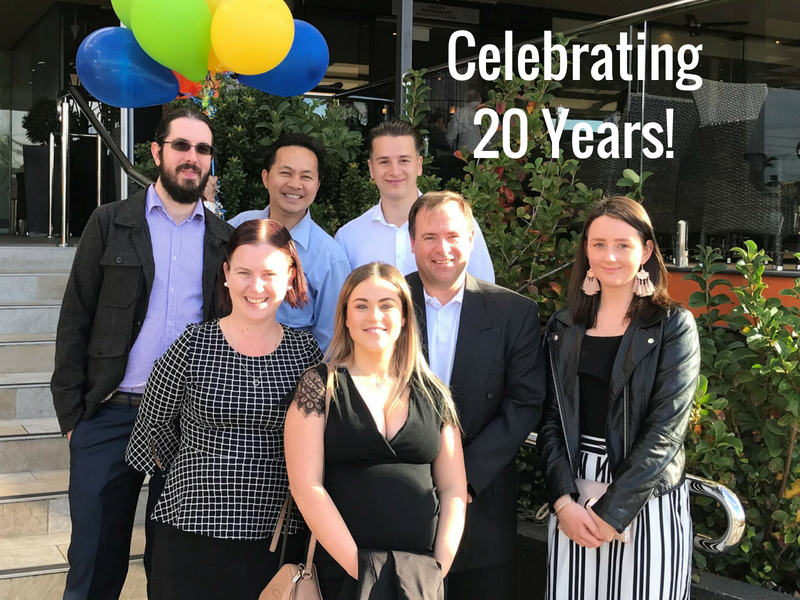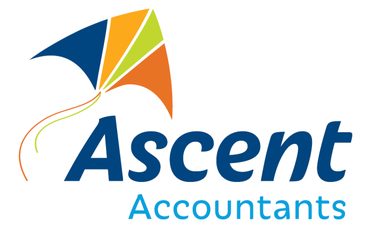The History of Ascent

The History of Ascent
1980’s
Before the formation of Ascent, Michael Bray operated Michael Bray & Associates. It all started back in the 1980’s Michael Bray begun construction of the Cannington Mason Street offices (that are still being used today). Whilst the units were under construction, a caravan was used as a temporary office, similar in style to the one pictured below;
Unfortunately during winter it was freezing in the caravan and the heat during summer was almost unbearable!
Once the buildings finished, the team moved into Unit 6, 38 Mason Street. It was a small unit but it was ideal for Michael and Helen Lacey who had just started building the business.
Michael Bray
1990’s
In 1997 a rather young Nigel Parker started part time as a graduate accountant whilst studying at Curtin University. Back in those days the technology was very limited. All the network run back to Michael’s laptop and we lost count on the number of times he forgot to bring it in to work and had to drive home to get it.
A young Nigel Parker
Ascent Business Directions (WA) started on the 1st July 1998 as a result of a merger between Michael Bray & Associates and the Melbourne based Ascent Business Directions. At the time of the merger both businesses had a lot of similar clients involved in Network Marketing. Ascent Business Directions wanted an office in WA and Michael saw this as a great opportunity to grow his business.
This was also Nigel’s first day of full-time work. It was almost his last! The first day Michael was out of the office and Nigel needed to see a new client. It worked out this client had major problems and Nigel was interrogated by the ATO at their old Cannington office. To say he was out of his depth was an understatement.
Ascent Business Directions Logo in 1998
The Directors of the original company were Michael Bray and Mark Letten. The business remained in Unit 6 for the first few months. Though we were running out of room. Nigel’s desk was right next to the front door. Every time a client walked in and opened the door it smacked into the desk. At least it woke him up but that’s where the messy hand writing came from as the desk was always being bumped as he wrote.
Within 6 months Ascent moved into the bigger office at Unit 3, 38 Mason Street. The staff grew as the business grew. We had Joan and then Annette working in Sales and Daniella and Dana started in admin and reception. Nigel was promoted to General Manager as Michael needed to take significant time off to look after his sick wife.
2000’s
By 2000 the business and staff had grown to the stage that we needed to operate from 2 of the Mason Street Units, being Unit 3 and Unit 5. Although the units were networked there was still a lot of walking between offices. Filing was in Unit 3 but the boardroom and reception was in Unit 5. It was a great way to keep fit! Between the offices of Unit 3 and Unit 5 was a firm of private investigators, who were also Ascent clients. They took great pride in scaring clients and staff as we made the walk between units. The big problem was the waste of time when they called you in to tell stories that can’t be repeated.
Bora started in 2001 as a fresh graduate accountant straight from Curtin University. His experience of previously working in the Sizzlers kitchen while at Uni impressed us. Especially how to cook the perfect steak.
A young Bora Heng
By the time Katrina started in 2002, Ascent was operating from 3 of the Mason Street Units, being Unit 2, Unit 3 and Unit 5. The reception had moved to Unit 2 with Michael and Murray (sales). The admin team and Nigel where in Unit 3. The filing room was in Unit 5 with the accountants Bora, Simon and for a short period of time Gene and Chantelle.
A young Katrina Martin
Mark Letten sold out of Ascent (WA) in April 2003. Nigel purchased his share of the business. Michael and Nigel continued to grow the business together during this time. The Melbourne arm of Ascent was phased out and the emphasis was to grow our Perth client base. However clients were (and still are) spread out all over WA. Nigel was in charge of seeing Country clients and organised 2 or 3 trips a year to the county each year to various locations.
Michael and Bora for a number of years did their annual trip to Kambalda to do the miners tax returns. It was for 2 weeks each year in mid July. It was a real eye opener for Bora as they stayed in the miners Dongas and had their meals in the Camps mess. Some of the miners were 3 times the size of Bora but they all got to know him and looked forward to his visit each year.
Our first staff trip was in 2004 to Melbourne for reaching targets for the year. It was designed as a footy weekend away but the girls were not impressed they had to attend the footy. They were there for the shopping! It was a great way to say thanks to the staff but also great for team spirit to spend those days away together. Since that first trip to Melbourne we have done a number of other trips. At least 5 times to Melbourne for the footy weekend away. The Freo and Eagles supporters love getting over there to support their team but the girls still love getting over there to shop and spend their money. Bora always got into the spirit of the AFL games. When we went to watch the Saints play one year they had another loss. Bora took pride after the game in taking off his jumper and walking back to the hotel wearing a shirt that he had made up. It read “ Saints – rebuilding since 1966” Great way to make friends in Melbourne!
Ascent Melbourne Lunch - 2004
2005’s
In September 2006 Michael Bray announced his retirement. He sold his share of the business to Nigel but remained working part time up to June 2008 when he fully retired. On his last day we invited all his clients into the office for drinks and to say a big thank-you for all his time, effort and the support he gave not only clients but staff as well.
Over the period 2006 to 2009 there was a lot of changes. Not only internally as technology got better and systems improved but we needed a fresh new look and office. The new logo and branding was done in 2006. It brought a fresh new look and excitement as we introduced it to the local community. The big change was the new office. In October 2006 we finished the complete refurbishment of our brand new office at Unit 4 and Unit 5 Mason Street, the units were combined into one big office with the latest technology. The staff had fun deciding on what offices they wanted and where things should be and go.
Ascent Business Directions Logo in 2006
Brendan started with Ascent as a graduate accountant in July 2007. He started on a part time basis while studying at Curtin University. When Danielle started with Ascent in June 2009 she replaced Fiona as receptionist. Fiona left to have her 1st child but continued to drop in and say hello.
Brendan and Danielle at our Team Bowling Day – August 2017
Over the period of time from 2009 and 2014 the business achieved significant targets and goals. To recognise these and to thanks staff we had not only the trips to Melbourne but also trips to Abbey Beach in Busselton, to Dunsborough and a few stays at the Crown in Perth. The Ascent family grew as staff had their own children. It was nice to see the kids and the families on these trips. But who can forget the games of Arsehole each night while having a few drinks and Cocktails.
In August 2013 Helen said goodbye as she retired. To celebrate we had a lunch at the Witches Cauldron to try their famous garlic prawns. It ended up being a bit of pub crawl as we finished at “The Vic” before taxis picked us up. As a thankyou Helen got a famed, signed jumper of her beloved Ben Cousins. It was interesting carrying that around to each pub!
Katrina and Helen at Helen’s Farewell Lunch Party with Bora carrying the Beloved Signed Jumper
One thing that has never changed is the love of AFL footy with the staff. Each year we have our footy tipping competition and we have now invited clients to participate as well. We have all had a turn at winning this and taking the prize money. Even Danielle had a win but we are still working out how. Brendan though always forgets to put his tips in even with all the staff reminding him. Staff catch ups to watch the footy especially the derbies are regular. One time stands out with Bora falling asleep in the Crown Casino after the game. His wife was trying to call him to pick him up but he was sound asleep.
A significant milestone for Ascent was our second rebranding in 2015. On the 1st July 2015 we had a name change to Ascent Accountants. We got our new logo, promo material and brand which was long overdue. Our new website was designed to engage existing and new clients which was needed to have an online and social media presence. Everyone still says how Nigel was 100% against the change however Nigel says he was actually the driving force behind it. The name has been the most significant change as this made it clear what we do so the local community could identify with us.
Ascent Accountants Logo in 2015
Albert started with us as a graduate accountant in August 2015. Again he started part-time as he completed his Curtin University degree. When Lauren started in February 2016 as receptionist, Danielle moved into the Office Manager role and Katrina moved into the Bookkeeper/Payroll Manager role. Steve has recently started with us. Again you guessed it, he is working part time as he finishes his Curtin University degree.
Albert and Lauren at our Team Bowling Day – August 2017
Steve is pictured at our Salt & Co Staff Cooking Class in April 2018
Ascent Accountants has been operating in Cannington for the past 20 years. We have been fortunate that we have had loyal clients and a number of those clients have actually been using us since we started back in 1998. We have seen Bunnings start and go from across the road. It is still a mystery what will be there next. We have been supporting local events during this time but our support of the Royal Flying Doctors has never changed. We were fortunate enough to have a tour of the facilities in 2015 and learn how they operate.
Ascent Accountants wants to continue to be part of and help the local Canning community. We will continue to keep up to date technically and keep up to date with innovations so we can continue to service our clients and the local community. We look forward to many more years to come.
Salt & Co Cooking Class in April 2018
Pictured: Steve, Albert, Brendan, Bora, Lauren, Katrina, Nigel and Danielle
Need help with your accounting?

























